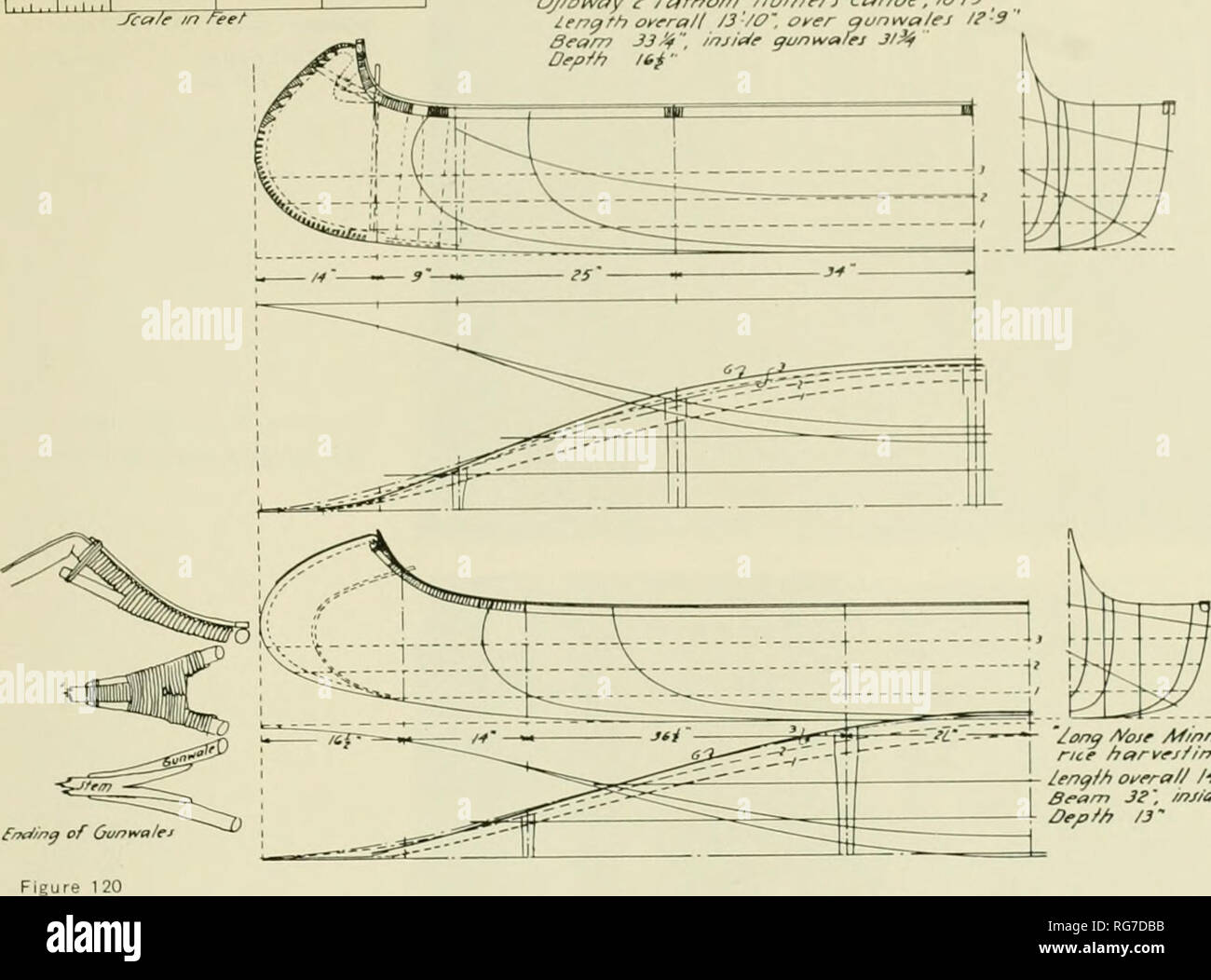. Bulletin - United States National Museum. Science. 0//6tvay t^ fafhom Ni/o/er'j Conof. /S-^9 ^ ien^r/i ot'era/i /3'/0'. or-rr gunna/eJ >7-9 Seam J3^', injii^f ^unwalri JiM Dfpff? lit â. '/on^ A'oir M'nnr/o/a Oj/i"»^/ rue /?arvej//r7t^ Canoe len /3" Small Ojibvvay Canoes of the Two Tribal Forms showing (above) early trend toward the long nose form, and the final Ojibway-Cree hybrid form combining flaring sides amidships with tumble-home sections at ends. often no more than a light stick or rod bent to profile, with the head split and brought over the gunwale ends and down inside

Image details
Contributor:
Book Worm / Alamy Stock PhotoImage ID:
RG7DBBFile size:
7.1 MB (224.9 KB Compressed download)Releases:
Model - no | Property - noDo I need a release?Dimensions:
1837 x 1360 px | 31.1 x 23 cm | 12.2 x 9.1 inches | 150dpiMore information:
This image is a public domain image, which means either that copyright has expired in the image or the copyright holder has waived their copyright. Alamy charges you a fee for access to the high resolution copy of the image.
This image could have imperfections as it’s either historical or reportage.
. Bulletin - United States National Museum. Science. 0//6tvay t^ fafhom Ni/o/er'j Conof. /S-^9 ^ ien^r/i ot'era/i /3'/0'. or-rr gunna/eJ >7-9 Seam J3^', injii^f ^unwalri JiM Dfpff? lit â. '/on^ A'oir M'nnr/o/a Oj/i"»^/ rue /?arvej//r7t^ Canoe len /3" Small Ojibvvay Canoes of the Two Tribal Forms showing (above) early trend toward the long nose form, and the final Ojibway-Cree hybrid form combining flaring sides amidships with tumble-home sections at ends. often no more than a light stick or rod bent to profile, with the head split and brought over the gunwale ends and down inside, between them. Each half of the split was then lashed to its neighboring gunwale member. A strip of bark was often placed over the end of the bark cover and carried down the face of the stem, under the sewing. The rail caps were then brought up over the tops of the gunwales and over- lapped the top portion of the stem piece. The heel of the stem-piece was bevelled off on the inboard side so that it could be wedged under the headboard, inside the bark cover. These headboards, it should be noted, were no more than a thin, narrow batten, and in some canoes the head of this batten was lashed under the gunwale ends instead of coming up between them inboard, as usual. A variation in the fitting of the stem head was found in a canoe at Long Lake, Ontario; the stem head, instead of being split, was lashed between the gunwale ends and thus was brought inboard level with the top of the gunwales. The cross section of the main gunwales was round or nearly so in nearly all long-nose canoes, and often a gunwale cap was fitted. The bark cover was secured to the gunwales by a continuous lashing, but in at least one example, from Minnesota, the gunwale wrappings were in groups over an outwale after the regular fashion to the eastward. The ends of the thwarts were wedge- or chisel-shaped and instead of being tenoned were forced into splits in the round gunwales. Many canoes had bark covers a